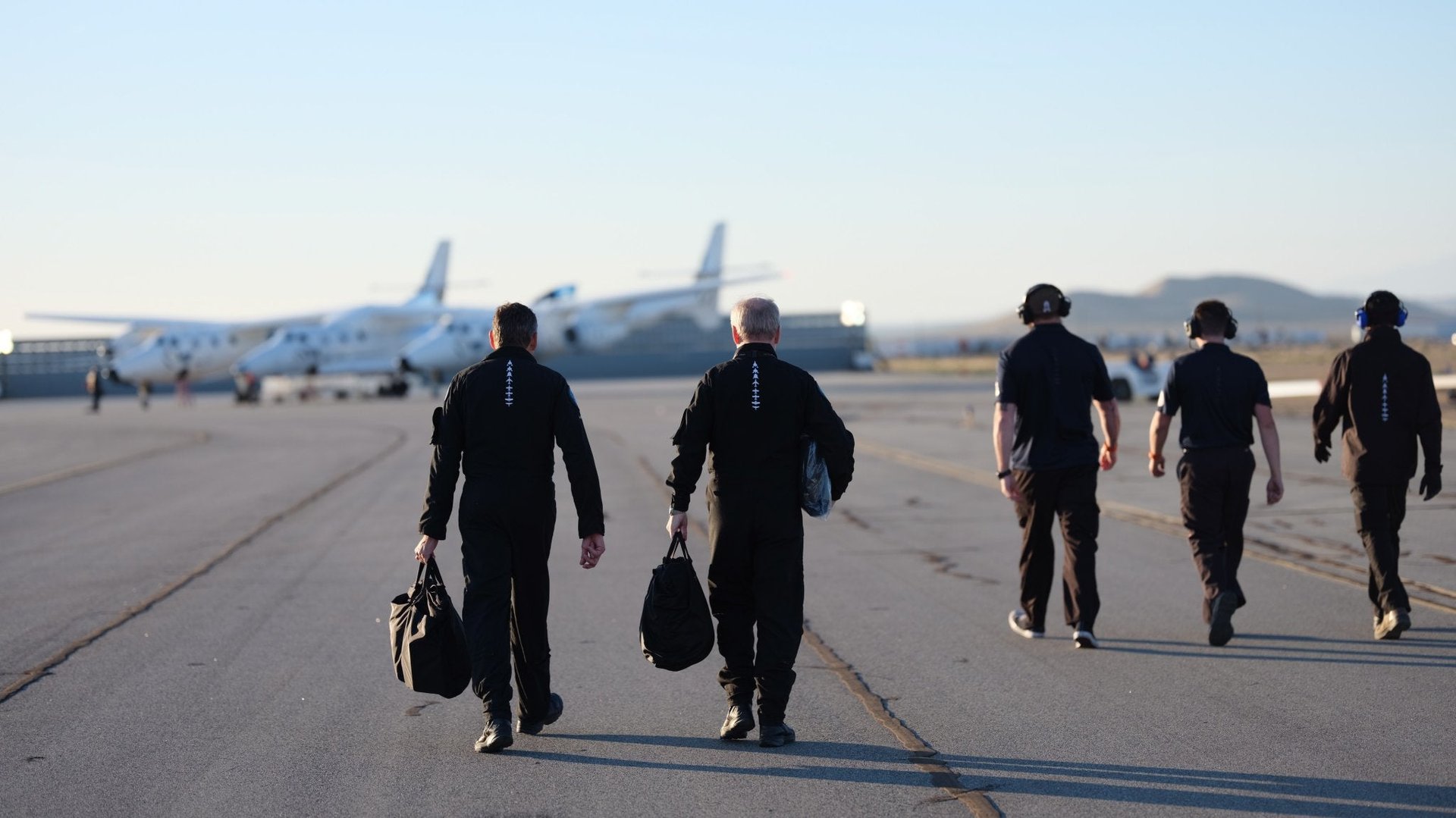Why is Boeing investing in Richard Branson’s rocket plane?
The world’s largest aerospace company is betting on Richard Branson’s dream of making spaceflight a normal part of life.


The world’s largest aerospace company is betting on Richard Branson’s dream of making spaceflight a normal part of life.
Boeing said on Oct. 8 that its venture fund, HorizonX, will invest $20 million into Virgin Galactic after the company goes public in a reverse merger, a transaction expected to take place in the fourth quarter of 2019. At current valuation, that’s equal to a modest two percent of the company.
Brian Schettler, the fund’s managing director, told Quartz the investment was intended to help Virgin “prove out technology to make high-speed mobility a reality.”
Branson’s Virgin Galactic has spent the last 15 years developing a rocket plane that, for a ticket costing $250,000, can carry passengers on a 20-minute trip to the edge of space before gliding back down to earth. It flew its first passenger in February, and the company is now preparing to begin operations at a spaceport in New Mexico. The vehicle can also carry scientific payloads; last week, the company announced that a group of Italian Air Force researchers would fly in 2020 with a set of experimental devices.
The business plan is focused on expanding its tourism offering at a break-neck pace—Virgin Galactic expects to find 2,600 new customers to pay $250,000 each for a 20-minute trip to space in the next few years, build a new plane every year, and fly 115 times in 2020. It’s a tall order.
While Boeing will soon have its own opportunities to fly orbital tourist missions, this investment suggests that the aerospace giant is interested in how Virgin could change the market for transportation. As private companies drive down the cost of going to space, some are beginning to think about using suborbital spaceflight to dramatically reduce travel time here on earth.
For example, Elon Musk has touted his futuristic Starship as being able to fly between any two points on earth in 30 minutes. Once in service, the fully-reusable rocket will have the capability to do so, but that’s likely not the biggest challenge for regular passenger service. Beyond the sheer cost of the rocket and the infrastructure to support it, launches are highly dependent on the weather, largely forbidden near major urban centers, and reusable rockets require weeks of refurbishment before they return to service.
Still, some analysts say the market is out there. Santosh Rao, the head of research at Manhattan Venture Partners, says that airline passengers already spend $407 billion on flights lasting more than 10 hours each year. If space companies can win 5% of that business, there’s a $20 billion market. But average fares for those flights are $2,500, so a ticket to ride on a spacecraft will need to fall drastically from current levels.
Given the regulatory challenges of flying vertical-take off rockets, the fact that Virgin Galactic’s rocket plane operates from traditional airports could give it an advantage in coming to market—if it can create a version of its spaceplane that is suitable for long-distance travel. Beyond traditional jet-liners, such a vehicle is likely to face competition from the first generation of supersonic planes being developed since the Concorde retired in 2003.
Schettler says he sees “a demand signal saying that time is our most precious commodity that we can’t get back. You see that building with the on-demand economy, the rise of urban air mobility, whether it’s commuting, or localized regional and urban transportation.” The hope at Boeing is that the new partnership will “make sure we have a seat at the table when everything fits together and the market is real.”
For Virgin Galactic CEO George Whitesides, the deal is more evidence that the private space sector is maturing. But his focus is still on getting commercial service up and going.
“It’s going to be an exciting day when we have a spacecraft flying under its own power, under New Mexican skies,” he says.
Looking for more in-depth coverage of Boeing? Sign up for a free trial of Quartz membership, and read our premium field guide on Boeing’s current crisis.